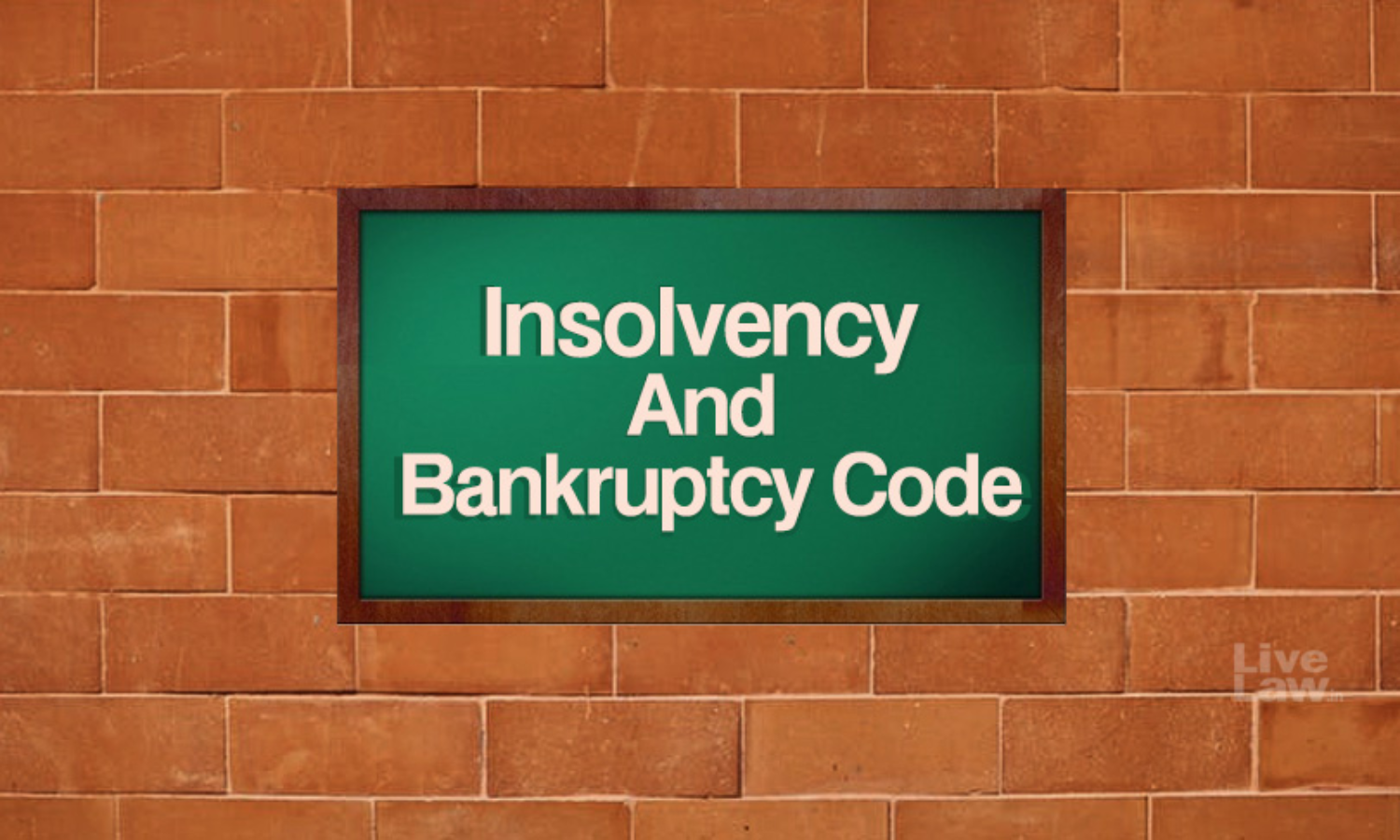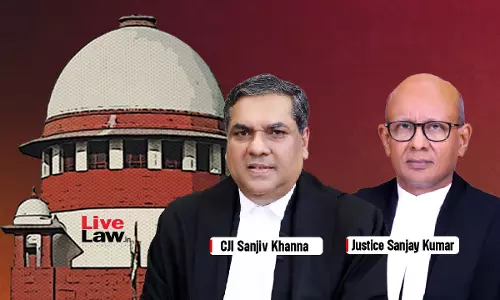
"Recovery is incidental under the IBC. Its primary objective is rescuing companies in distress." – Dr. M.S. Sahoo (Chairperson, Insolvency and Bankruptcy Board of India) The above quoted words of Dr. Sahoo from his article in the print edition of Indian Express on March 14, 2020 under the title: 'The real reform', form the underlying theme of the Insolvency and Bankruptcy...
"Recovery is incidental under the IBC. Its primary objective is rescuing companies in distress." – Dr. M.S. Sahoo (Chairperson, Insolvency and Bankruptcy Board of India)
The above quoted words of Dr. Sahoo from his article in the print edition of Indian Express on March 14, 2020 under the title: 'The real reform', form the underlying theme of the Insolvency and Bankruptcy Code (Amendment) Act, 2020 ("2020 Amendment Act", for short). The Statement of Objects and Reasons of the corresponding bill ascribes the need for the fourth legislative intervention to the Insolvency and Bankruptcy Code, 2016 ("IBC 2016", for short) to conferment of highest priority in repayment to last mile funding to corporate debtors to prevent insolvency, prevention of potential abuse of the Code by certain classes of financial creditors, provision of immunity against prosecution of the corporate debtor and action against the property of the corporate debtor and the successful resolution, and filling of the critical gaps in the corporate insolvency framework.
All such objectives and reasons are primarily aimed at rescuing the 'titanic' from sinking than airlifting-securing a few influential and powerful passengers, though at the cost of some damage and disfigurement of the ship; a sentiment that has echoed with the NCLAT in its judgment of March 12, 2020 in the IL&FS matter. The NCLAT, while rejecting the objections raised by some financial creditors over distribution of funds under the revised distribution framework, has upheld the scheme of pro-rata distribution suggested by the Union of India and IL&FS, stating that it would be in consonance with the public interest.
The 2020 Amendment Act was passed by the Lower House of the Parliament on March 6, 2020 and by the Upper House on March 12, 2020. After receiving the assent of the President, the Amending Statute was published in the Official Gazette on March 13, 2020. This Article attempts to underscore and unfold the changes introduced in the Code by the 2020 Amendment Act.
Key Highlights of the 2020 Amendment Act:
The Act inter alia aims to provide a timebound completion of the insolvency process, confers preference upon secured financial creditors over operational creditors in the matter of distribution of assets upon resolution of a corporate debtor, and lays down the manner of voting by an authorised representative on behalf of the class of financial creditors.
- Insolvency Commencement Date
Section 2 of the 2020 Amendment Act deletes the proviso from the definition of "insolvency commencement date" u/s 5(12) of the Code such that the insolvency resolution process commences from the date of admission of an application for initiating corporate insolvency resolution process (CIRP), and not when the Interim Resolution Professional (IRP) is appointed by the adjudicating authority ("AA", for short). The corresponding change brought out in Section 16(1) of the Code mandates the AA to appoint the IRP on the insolvency commencement date, thereby withdrawing the leeway of 14 days from the insolvency commencement date for the appointment of IRP. The above amendment curtails the anticipated delay in completion of resolution to the extent of 14 days.
- Expansion of definition of 'interim finance'
The legislature has expanded the ambit of 'interim finance' u/s 5(15) of the Code by insertion of the words "and such other debt as may be notified" at the end of its definition. Interim finance essentially refers to short-term loans required to keep a company under the CIRP running as a going concern. The Code allows an IRP/RP to raise interim finance in order to protect and preserve the value of the property of a corporate debtor ("CD", for short) and to manage its operations as a going concern. In the Code, the term 'insolvency resolution process cost' includes any interim finance raised for a corporate debtor along with the cost of raising such interim finance. The distribution waterfall u/s 53 of the Code provides for the highest priority to be given to insolvency resolution process costs, which includes such interim finance.
Thus, the Parliament, by expanding the definition of 'interim finance', has underscored its importance in the management of the operations of CD and endeavoured to give some free hand to the IRP and Committee of Creditors ("CoC", for short) to run and maintain the company as a going concern.
- Section 7 – Initiation of corporate insolvency resolution process by financial creditor
The 2020 Amendment Act raises the minimum threshold for certain classes of financial creditors for initiating CIRP, prescribing that the application by these creditors u/s 7(1) of the Code should be filed jointly by at least 100 such creditors or 10% of their total number, whichever is less. These classes include real estate allottees and security or deposit holders represented by a trustee/agent. The amendment also clarifies that where such an application for initiating the CIRP against a CD has not been admitted by the AA before the commencement of the 2020 Amendment Act, such application shall be modified to comply with the aforesaid requirements within thirty days of the commencement of the said Act, failing which the application shall be deemed to be withdrawn before its admission.
This can easily be touted as the most far-reaching amendment to the IBC' 2016 which is likely to be greeted with a constitutional challenge by the homebuyers. It is noteworthy that through the Second Amendment Act of 2018, the government, by inserting an explanation to Section 5(8)(f) of the IBC, had accorded homebuyers the status of financial creditors in order to empower them to be part of the Committee of Creditors (CoC). However, builders had challenged the constitutional validity of that amendment before the Apex Court in Pioneer Urban Land and Infrastructure Limited vs. Union of India. The Apex Court, vide its judgment dated August 9, 2019, held the amendment to be constitutional and rejected the developers' plea. In this matter, the builders had suggested introduction of a minimum threshold for homebuyers to trigger the Code but that was not accepted by the Court on the ground that, "the doctrine of reading down would apply only when general words used in a statute or regulation can be confined in a particular manner so as not to infringe a constitutional right.". Hence, the Apex Court having rejected the matter of minimum threshold in view of a perceived legislative lacuna, the legislature has incorporated such requirement in the Code sans over-reaching the Pioneer judgment.
While the legislature has sought to placate the developers from over-exposure to remedial and welfare legislations, the concerns of homebuyers remain with respect to implementation of the amendment. The minimum threshold criteria is fraught with practical difficulties since sale is a continuous process, and how will a homebuyer know how many units have been sold to determine the 10% of total number of units sold in real estate project, especially when 10% is less than 100. That said, the aggrieved homebuyers can still look elsewhere (RERA, or COPRA) for redressal of their complaints against the developers and builders.
- Corporate debtors entitled to make application
Section 4 of the 2020 Amendment Act inserts an explanation u/s 11 of the Code which stipulates that a corporate debtor undergoing CIRP, or having completed CIRP 12 months preceding the date of making of the application or in respect of whom a liquidation order has been made, etc. shall be entitled to make an application to initiate CIRP against other corporate debtors. This step is likely to enhance the maximisation of value of a corporate debtor. It is pertinent to note that NCLT, Mumbai and NCLT, Delhi had adopted two divergent views in Jai Ambe Enterprise vs. S. N. Plumbings Pvt. Ltd. and Asian Plumbings and Mandhana Industries Ltd. vs. Instyle Exports Pvt. Ltd. respectively, and there was a pressing need for clarification. Now, with the newly inserted explanation to Section 11, the legislature has settled the debate in agreeing with the NCLT, Mumbai and upholding its viewpoint that it is one of the duties of the RP to recover the outstanding debts of a CD against whom the CIRP is already in progress and it is a right course of action for managing the affairs of the financially stressed company.
- Section 14 – Mushrooming ambit of Moratorium
- Section 5 of the 2020 Amendment Act inserts an explanation to Section 14(1) of the Code which extends the moratorium under IBC to protect the license, permit, registration, quota, concessions, clearances and other similar grants or rights given by the Central or State Government, local authority, sectoral regulator or any other authority from suspension and termination during the CIRP, unless there is a default in payment of the current dues for its use or continuation during the moratorium period. This amendment was necessary in view of the Supreme Court ruling in Embassy Property Development Pvt. Ltd. v. State of Karnataka, Civil Appeal No. 9170 of 2019, dated December 3, 2019, wherein it dealt with the issue of deemed extension of lease granted by the government. It was observed by the Apex Court that the purpose of moratorium is only to preserve the status quo and not to create a new right, and that Section 14(1)(d) only prohibits the right not to be dispossessed, but not the right to have renewal of the lease of such property. The newly inserted explanation to Section 14(1) augments the hopes of a CD facing CIRP, and advances the intent of IBC to preserve the status of a CD as a going concern. It also does well to premise such protection on the payment of current dues.
- The 2020 Amendment Act inserts sub-section (2A) u/s 14 that empowers the IRP or RP to maintain the supply of critical goods and services, and prevent termination, suspension or interruption of arrangements relating to such supply so as to protect the value of the CD. The interpretation of 'essential goods and services' u/s 14(2) has been a subject of conflicting stances of NCLAT in ICICI Bank Ltd. vs. M/s. Innoventive Industries Ltd. and Canara Bank vs. Deccan Chronicle Holdings Ltd., where the former swears by the bare reading and strict interpretation of the definition of 'essential goods and services' under the CIRP Regulations, 2016, but the latter holds that water, electricity, printing ink, printing plates, printing blankets and solvents will come under the purview of exemption granted to essential services u/s 14(2) of the Code, implying thereby that the definition is exhaustive. The Insolvency Law Committee had also felt the need for expanding the scope of mandatory essential supplies covered u/s 14(2) of the Code. Therefore, the newly inserted sub-section (2A) u/s 14 confers precedence to the discretion of IRP/RP in determining which goods and services are critical to protect and preserve the value of the CD and manage its operations as a going concern.
The amendment, drawing sustenance from the judgments of NCLAT in Dakshin Gujarat VIJ Company Limited v. ABG Shipyard and Innoventive Industries Ltd. v. Maharashtra State Electricity Distribution Company Ltd., specifies that the supply of critical goods and services to the CD is predicated on payment of dues arising from such supply. The Insolvency and Bankruptcy Board of India is empowered under the newly inserted clause (ia) u/s 240(2) to make regulations to provide for circumstances in which supply of critical goods or services may be terminated, suspended or interrupted during the period of moratorium u/s 14(2A).
- The amended Section 14(3)(a) protects not only the transactions from moratorium now, but also agreements or other arrangements notified by the Central Government.
- Section 23 – Management of operations of the CD
The substitution of the Proviso u/s 23(1) of the Code clarifies that a RP shall continue to manage the affairs of the CD till the Resolution Plan is approved by the AA u/s 31(1) or till the appointment of a liquidator u/s 34 by the AA in the event of rejection of the resolution plan for failure to meet requirements mentioned in Section 30. This is expected to ease the functioning of a RP and dispenses with the requirement of filing endless applications seeking suitable direction/s. It also expressly authorises management of affairs by RP during the interregnum from the rejection to RP till appointment of liquidator.
- Insertion of Section 32A in the Code
The insertion of Section 32A in the Code is the most significant amendment brought out by the Government, that strives to shield the successful resolution applicants and their property from the threat of criminal proceedings qua the offences committed by the former promoters of the CD.
- The newly inserted Section 32A(1) of the Code provides that the liability of a CD for an offence committed prior to the commencement of the CIRP shall cease and the CD shall not be prosecuted for such an offence from the date on which the resolution plan has been approved by the AA u/s 31 of the Code. However, this benefit only kicks in when the change in the management or control of the CD is not to a person who was the erstwhile promoter or partook in the management or control of the CD or is a related party of such a person. It has been further clarified that the person in charge of the management should not be the one with respect to whom any investigating authority has reason to believe that he had abetted or conspired for the commission of the offence, and has submitted or filed a report or a complaint to the relevant statutory authority or Court. While Section 32A insulates the CD, but continues to hold the following persons liable for such offences:
(a) every person who was a "designated partner" as defined in clause (j) of Section 2 of the Limited Liability Partnership Act, 2008;
(b) an "officer who is in default", as defined in clause (60) of Section 2 of the Companies Act, 2013;
(c) a person who was in any manner in charge of, or responsible to the CD for the conduct of its business or associated with the CD in any manner; and
(d) a person who was directly or indirectly involved in the commission of such offence as per the report submitted or complaint filed by the investigating authority.
Also, the proviso to Section 32A(1) provides for discharge of a previous prosecution, instituted during the CIRP against such CD, from the date of approval of the resolution plan.
- The 2020 Amendment Act adds another sub-section (2) to Section 32A of the IBC, which proscribes any action including attachment, seizure, retention or confiscation of property of the CD in relation to an offence committed prior to the commencement of CIRP, in case such property is covered by the resolution plan approved by the AA. The immunity from such action is also conditioned on the requirements of change in control or management of the CD, as present u/s 32A(1). However, it is to be noted that action against the properties of any person other than the CD or the person who acquired such properties through CIRP or liquidation process, is not barred, and action may be taken under the relevant law.
Notwithstanding the immunity given, Section 32A makes it mandatory for the CD and/ or any person who may be required to assist or co-operate with any authority investigating an offence committed prior to the commencement of the CIRP, to provide necessary assistance and co-operation.
The imposition of criminal liability on the CD and co-existence of the Code with other penal statutes has been traversed by the Courts in a few instances, albeit sans certitude. The NCLT, Mumbai in Sterling SEZ Infrastructure Ltd. vs. Deputy Director, Directorate of Enforcement, had held that IBC would have an overriding effect on the PMLA and that if an attachment order of the assets of the CD is passed, the said order would be a nullity and non-est in law. Per Contra, the Delhi High Court in The Deputy Director, Directorate of Enforcement, Delhi vs. Axis Bank & Ors. held that regulations such as the Recovery of Debts Due to Bank and Financial Institutions Act, 1993, the Securitisation and Reconstruction of Financial Assets and Enforcement of Securities Interest Act, 2002, the PMLA and the Code must co-exist and shall be construed and enforced harmoniously, without one being in derogation of the other. The NCLAT had taken a similar view in Varrsana Ispat Limited vs. Deputy Director, Directorate of Enforcement, and thereafter, in Rotomac Global Private Limited vs. Deputy Director, Directorate of Enforcement, wherein it has been held had the PMLA relates to different fields of penal action of 'proceeds of crime', and therefore, Section 14 of the Code is not applicable to the criminal proceedings or any penal action taken pursuant to the criminal proceedings that can be invoked simultaneously with the Code, having no overriding effect of one Act over the other. Now, by way of the insertion of Section 32A, the legislature has clarified that in cases where the CD is undergoing investigation by the CBI, SFIO and/ or the ED, criminal liability can be imposed on the successful resolution applicant s.t. fulfilment of certain pre-requisites.
- Section 227 – Financial Service Providers
The newly inserted explanation to Section 227 of the Code provides that the proceedings for insolvency and liquidation for financial service providers or categories of financial service providers may be conducted with such modifications and in such manner as may be prescribed. This comes in the wake of notification of the Insolvency and Bankruptcy (Insolvency and Liquidation Proceedings of Financial Service Providers and Application to Adjudicating Authority) Rules, 2019 in November last year. The financial predicament faced by IL&FS and DHFL had raised disturbing doubts over the functioning and operation of FSPs (like housing finance companies and other specified non-banking financial companies), thereby inducing demand for notification of Code for the FSPs.
Conclusion:
The Insolvency and Bankruptcy Code, 2016 has proved to be a game-changer in way the rest of world perceives India as a purely commercial destination. India has jumped several ranks and crossed several hurdles to fare well in the global indexes and parameters of "Ease of Doing Business". This is primarily attributable to dynamism and resilience demonstrated by the present regime to adapt the arbitration act and insolvency code with the evolving scenario-landscape and changing demands of India's corporate sector.
Of the many reforms the 2020 Amendment introduces, it inaugurally equips the CD to initiate CIRP against other CDs, mushrooms the ambit of Section 14, and inserts Section 32A to immune the CD and its new management post the resolution process. The Code, just like any other fledgling legislation, grappled with divergent views of the Courts, experts and other stakeholders on its interpretation and implementation. But taking cue from a number of felicitous and far-reaching expositions done by the judiciary, the legislature has responded well to timely intervene in filling certain existing critical lacunae in the Code.
Now, on flipping the coin, we notice that the time consumed for completion of the CIRP is still a far cry from the original 270-days timeline envisaged under the Code. Quoting the March 18, 2020 edition of the Indian Express, "in a substantial number of cases, the 270-day deadline was breached. In September 2019, this deadline was extended to 330 days (eased further after the Essar Steel case). Yet, cases continue to drag on. Of the 1,961 cases that are currently undergoing resolution, 635 (32 per cent) have crossed the 270-day deadline. Further, the average time taken by the 190 resolution processes stood at 394 days. As a time-bound resolution process was one of the key tenets of the IBC, delays reduce its attractiveness. Thus, reports that the government is set to undertake a review of the law to reduce the time taken are indeed welcome.". Thus, there is a pressing need to arrest this delay and ensure timely completion of the process, lest it evaporates the value of assets and lead to greater costs for both lenders and corporate bidders.
That said, the Code is a welcome change when compared to other regimes of winding up and BIFR, which used to devour decades for its culmination. Quoting Dr. Sahoo, "Achievement of the Insolvency Code is that debtors now resolve defaults in early stages in the long term.". The government has, since its introduction, taken several steps to ensure a smooth sail for the Code, and it must continue to do so. The institutional capacity needs to be bolstered to deal with the burgeoning cases that are going through the process. The setting up of NCLAT-Chennai is a step in the right direction, but more needs to be done to deal with pending insolvency cases and speed up the process.
(The author is a Delhi-based advocate. Email ID: sgassociates444@gmail.com, abhishek_1509@hotmail.com; Mob.: 9971065767)




